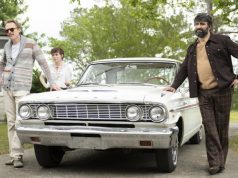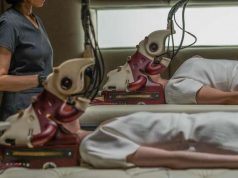Duncan Roy, in introducing his writing/directing debut “AKA” at Sundance, said, “I was sent to prison for a year when I was 20. These are the events that sort of led up to it. I hope you enjoy watching that.”
Knowing the film is at least partially true is one of several elements that make it worth noting. It is also told in a visually innovative style and addresses interesting issues of class and society. Curiously, however, these factors do not make it a good film. It is over-long and at times exceedingly dull — a waste, almost, of some very good techniques and ideas. It sits on the edge of being an excellent movie, then teeters over the wrong way and plummets.
Set in 1978 in England, the film, with its protagonist’s unfortunate circumstances and the odd array of supporting characters flitting in and out of his life, is something a gay Charles Dickens might have written.
Dean Page (Matthew Leitch), a working-class teenager dissatisfied with his waitress mother and abusive father, sets out on his own, thanks to a couple of “Great Expectations”-meets- “Talented Mr. Ripley” connections. He works first at a snobby art gallery for Lady Gryffoyn (Diana Quick), and subsequently winds up in Paris, impersonating her son and running with the aristocracy.
He encounters, over the course of the film, a cadre of hilarious middle-aged gay men and a more serious gay hustler (Peter Youngblood Hills) his own age. Homosexuality is not discussed at great length, but exists as an element within the film. Roy has other issues on his mind, notably England’s fascination with the wealthy and its adherence to old-fashioned class distinctions. Dean’s infiltration of the aristocracy is, of course, an appalling thing to do in that world. Pointing out the absurdity of a class system to the people in it never goes over well.
I have put off discussing the film’s most obvious innovation, which is that the screen is occupied by three separate images, set side by side. It is rather like watching a bank of surveillance monitors, three of them, usually showing different angles of the same scene, sometimes showing exact duplicates of each other, sometimes lagging behind one another just enough so that an important line gets repeated. It takes just a few minutes to get used to the gimmick, and then it becomes a seductive, captivating way to tell a story. If only the story it tells were a more interesting one.
C+ (2 hrs.; )





